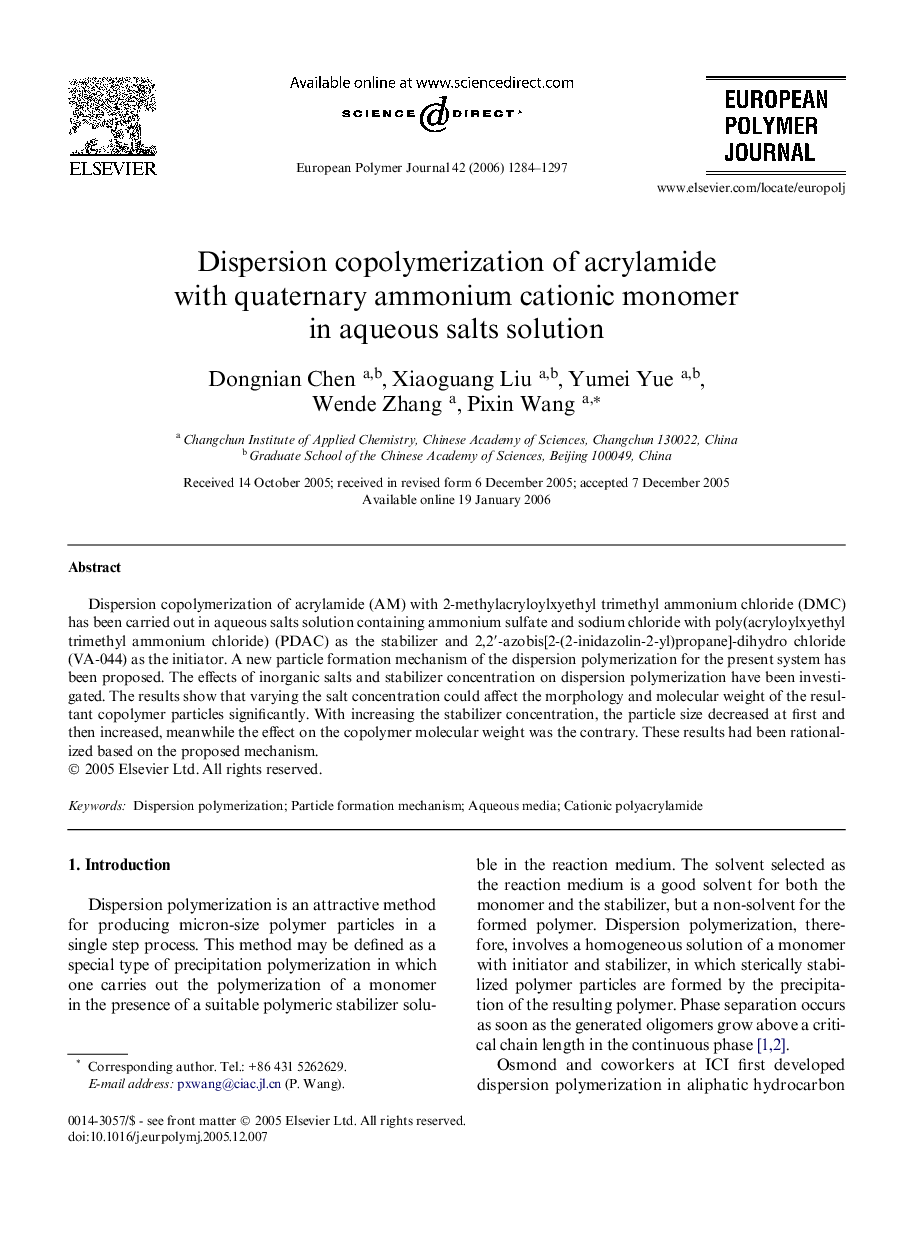| Article ID | Journal | Published Year | Pages | File Type |
|---|---|---|---|---|
| 1396939 | European Polymer Journal | 2006 | 14 Pages |
Dispersion copolymerization of acrylamide (AM) with 2-methylacryloylxyethyl trimethyl ammonium chloride (DMC) has been carried out in aqueous salts solution containing ammonium sulfate and sodium chloride with poly(acryloylxyethyl trimethyl ammonium chloride) (PDAC) as the stabilizer and 2,2′-azobis[2-(2-inidazolin-2-yl)propane]-dihydro chloride (VA-044) as the initiator. A new particle formation mechanism of the dispersion polymerization for the present system has been proposed. The effects of inorganic salts and stabilizer concentration on dispersion polymerization have been investigated. The results show that varying the salt concentration could affect the morphology and molecular weight of the resultant copolymer particles significantly. With increasing the stabilizer concentration, the particle size decreased at first and then increased, meanwhile the effect on the copolymer molecular weight was the contrary. These results had been rationalized based on the proposed mechanism.
